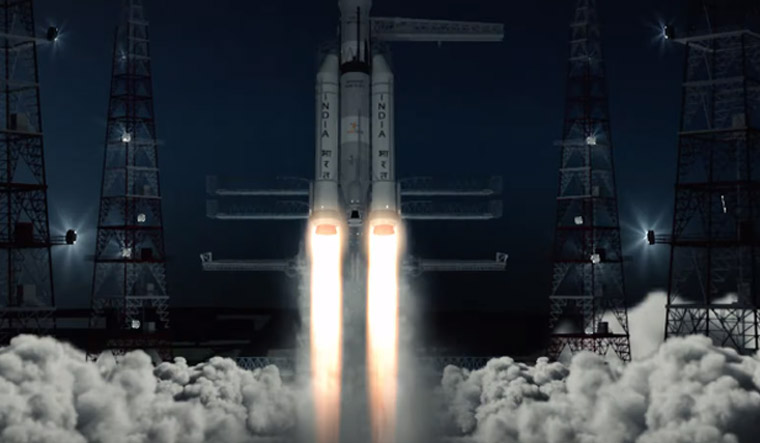The countdown has started. The action has shifted to a tiny island on the east coast, Sriharikota, from where Chandrayaan 2 will begin its momentous journey to the moon in the wee hours of July 15. President Ram Nath Kovind will be at the venue, watching the take-off.
This mission marks the golden jubilee of its parent, the ISRO, and the centenary of the birth of Vikram Sarabhai, the founder of India's space programme. It is also 50 years after the US sent the first man to the moon—Neil Armstrong.
Chandrayaan 2 is India's second probe to the moon—the first was 11 years ago. The importance of this mission is in the complexity of the science that ISRO has ventured into.
ALSO READ: Reaching for the moon
The mission requires complicated and precision science. However, ISRO is confident of most of them. The first challenge is to get out of the influence of the earth. India has already aced it in the first moon mission, as well as in its Mars probe, Mars Orbiter Mission (MOM).
A set of huge antennae at Byalalu, in Karnataka, which form part of the Indian Deep Space Network (IDSN), will provide the two-way communication.
The second big challenge is getting into the moon's orbit. This technology, too, has been tested during Chandrayaan 1.
also read
- How NVS-02 launch will propel India's spacefaring ambitions?
- Understanding Gaganyaan's Crew Module for uncrewed mission
- Amid opposition’s ‘hacking’ claims, PM Modi lauds EC for using technology to empower voters in Mann ki Baat
- SpaDeX mission: Why ISRO's successful docking a giant leap for Indian space exploration?
The realm of the unknown actually begins when Chandrayaan 2 lowers its lander, Vikram, into the moon's surface. This is a science that ISRO has only tested in laboratory conditions, and this is why chairman K. Sivan calls it the most “terrifying” 15 minutes of the mission. However, Sivan is confident, because the scientists have left nothing to chance, having tested the landing several times in the simulated facility in Chitradurga, Karnataka.
Reaching the moon is only one part of the mission. India is hopeful of conducting some good science, to add onto the knowledge of the moon. The probe is landing very close to the south pole of the moon, an area that has previously not been explored. The instruments on board Chandrayaan 2 are designed to test the chemical composition of the lunar surface, seismic activity on the moon, probe for the presence of water, as well as to get more details about the moon's atmosphere.
After 50 years of exploration, what does India hope to do new? To give perspective, let us remember that 50 years of probing hasn't even scratched the surface, let alone delved deep. The mysteries of the moon are many, and yet to be understood. Sceptics who wondered what Chandrayaan 1 hoped to achieve were silenced when it discovered the presence of water on the moon.



